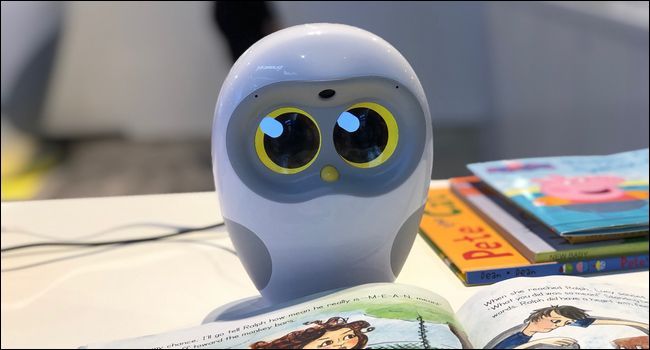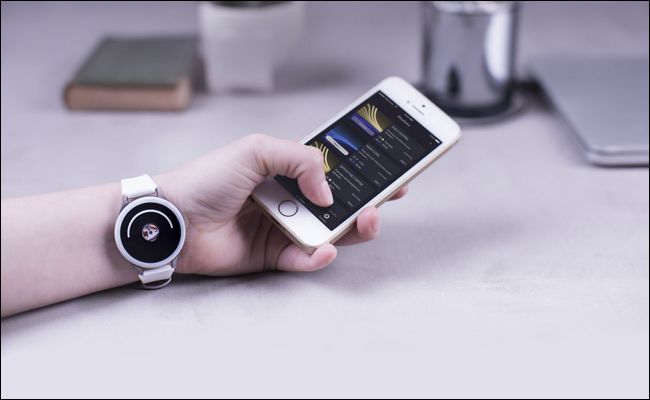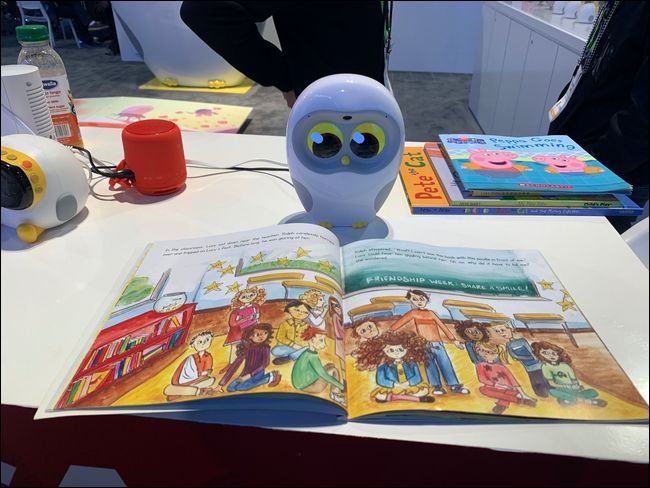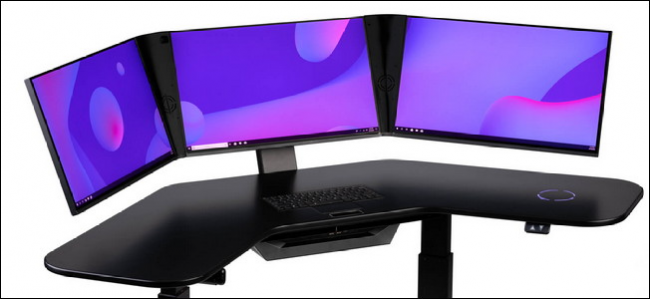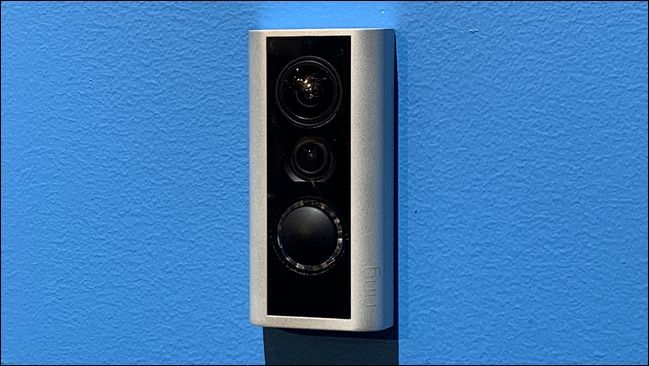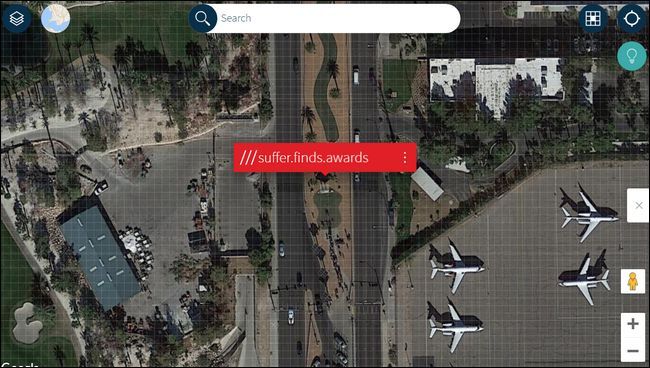Quick Links
It's a Herculean effort to see everything at CES. It's an equal challenge to pick a favorite thing among the fantastic (and not so fantastic) things on the floor, but here are our personal favorites from CES 2019.
I sat down with each of our editors and writers at CES and---after our days in press briefings, meetings, and walking the infinite-feeling convention floors---asked them what their favorite CES find was with an emphasis on something that truly caught their eye. Below, paired with who we are and what we do, you'll find what we loved.
Jason Fitzpatrick, Review Geek Editor: Doppel
You're not really experiencing CES unless you're running into everyone and their brother (and their sister and cousins too) with some sort of device that claims to calm you, soothe you, help you sleep. When I saw the Doppel folks and the information at their booth about how Doppel was a device designed to be worn on your wrist to both calm and energize you, well let me tell you: I only stuck out my wrist to try it out because I'm an easy going sort of guy that's willing to try something new and not because I expected anything at all out of the experience.
Georgina, who also appeared to be the easygoing sort, strapped the Doppel on the inside of my wrist while explaining the entire concept: the tiny weighted motor inside flutters like a heartbeat with a familiar lub-dub beat and that humans just naturally respond to the rhythm. You can tune and customize the Doppel via a companion mobile app and it just happened to be that the Doppel I tried was about as finely tuned to my heartbeat at that moment as you could ask for. The effect was incredible.
When I stuck my wrist out to try it out I had a "maybe my wife will like this" take on it, but within a few moments, I was smiling at how soothing and pleasant the experience was. Prior to putting it on I felt like it probably wouldn't have much effect (and might even be annoying) and now I'm planning on ordering one---I certainly didn't want to give the demo model back. Of all the devices I came across in this category, the Doppel had the most immediate and impressive effect.
The Doppel is available now for $219, direct from the company.
Chris Hoffman, Features Editor: Luka, Picture Book Reading Robot
Luka is a little owl shaped robot that reads picture books to your kids. Literally, it reads the book---you place a picture book in front of Luka and it reads the title. You turn the page and it starts reading the words on the open pages. Turn to any page in the book and Luka immediately recognizes the page you’re on and starts reading it. You don’t have to purchase special books for this---it works with the books you already have. Kids can read picture books on their own with a little owl robot, even when you’re busy.
The tech behind this is surprisingly clever. Ling Technology Inc, the company behind Luka, scans tens of thousands of picture books and extracts the text---around 60,000 books are already in their database. When you open to a page in a picture book, Luka sees the page with its camera, quickly recognizes the page, and starts reading the words. That makes it fast and ensures it’s accurate as the device doesn't have to process the text on the fly with local hardware.
Luka comes with a built-in speaker and battery. It even responds to various actions---you can pat the owl robot’s head and rub its tummy for a cute reaction. Parents can even tell Luka to say things through a smartphone app, so you can have the cute owl robot say “Let’s go to bed!” or “Brushing your teeth is important!” It’s adorable.
This smart owl launched last year in China, and now the company is working on a US launch later in 2019---the tech is ready to go, but getting rights to the picture books is taking some time. Expect it to cost around $99, but multiple models will be available at multiple price points.
Cam Summerson, News Editor: Cemtrex Smartdesk
I’ve seen a lot of cool products at CES, but on reflection, I keep coming back to one or two standout products. Of the two, I think the SmartDesk by Cemtrex may be my favorite because it offers an insane combination of cool features and integration at an impressive price point. (For those curious, my other favorite is probably the HP Omen X Emperium 65 BFGD. So good.)
The SmartDesk is a sit/stand desk with a built-in computer and all the integrated hardware you need—just plug it up and use it. It has an integrated keyboard and touchpad, as well as three 24-inch 1080p touchscreen monitors. There are currently two configurations available: one has16GB of RAM, a GTX1050 graphics card, 256GB SSD, and 1TB HDD; the other has 32GB of RAM, a GTX1060, and 2TB HDD in place of the 1TB found in the base model. Both feature 8th generation Intel Core i7 processor.
But that’s really just the nuts and bolts of the SmartDesk. It also has a built-in wireless charger on the right side of the desk, and a mind-blowing gesture control panel that lets you control the PC without touching it. Cemtrex built a custom software layer that runs within Windows to track user movements, which lets you use simple hand gestures for things like zooming, scrolling, and even taking screenshots. It’s the closest thing to Minority Report-level stuff that I’ve ever seen in a consumer product.
There’s also a small camera between the left and center monitors that points down at the desk and functions as a no-fuss document scanner. All you have to do is open the software and drop a document on the left side of the desk—the camera will find the doc, scan it, and save it. It’s a great example of really cool but still incredible, practical tech.
Of course, there’s always a burning question with this level of technology and integration: what happens if something breaks? Fortunately, the SmartDesk’s integrated PC is completely user accessible and upgradeable, so at least there’s that. Otherwise, both models offer a one-year warranty on parts and six months on labor.
The base model starts at $4,499, while the upgraded model will set you back $5,299. To learn more about how incredible this desk really is, check out the Cemtrex site.
Craig Lloyd, Smarthome Writer: Ring Door View Cam
Renters have always struggled to find smarthome devices they can install in their apartments without the landlord freaking out---the Ring Door View Cam is a neat little alternative to the company’s traditional video doorbells.
It’s pretty much a digital peephole; installing it just requires removing the existing peephole and screwing on the Door View Cam in its place—no permanent modifications. Better yet, while you have a 1080p camera that can do night vision, two-way talk, and runs completely on battery, you still get a traditional peephole to look through.
The coolest feature, though, is knock detection. You can still use the Door View Cam as a doorbell and connect it to a Ring Chime inside, but if someone knocks instead, the Door View Cam can detect that and send you a notification. This is a feature that you won’t find on any other video doorbell.
The Door View Cam will be available at some point later this year for $199.
Michael Crider, PC Hardware Writer: What3Words
CES is usually a place for showing off hardware, but the most innovative thing I saw in Vegas was a combination service and app. What3Words is a means of giving someone exact locations that are unchanging, precise, and easy to remember---an alternative to jotting down street names, numbers, zip codes, or even GPS coordinates.
The idea is simple: the entire planet is chopped up into a grid of ten-foot squares, each and every one of which is given a permanent designation of three simple words. The Las Vegas welcome sign, for example, is "suffer.finds.awards." The locations work across any language, and an algorithm makes sure that no two are similar within any reasonably wide area.
The ideal examples given were outdoor venues with wide spaces and few distinguishing features: you might say "meet me by the white tent" at a music festival and be less than helpful. But switch to "meet me at grass.billow.angry" and you have an easily-shareable location. The service's weak spot is large indoor areas---like, say, the convention halls of CES---where it must default to entrances in lieu of accurate GPS.
Still, I think What3Words has the potential to be on everyone's phone in the next two or three years, becoming the biggest leap forward in personal navigation since Google Maps. The company's promising start, open API approach, and growing list of integration partners would certainly seem to suggest it.

